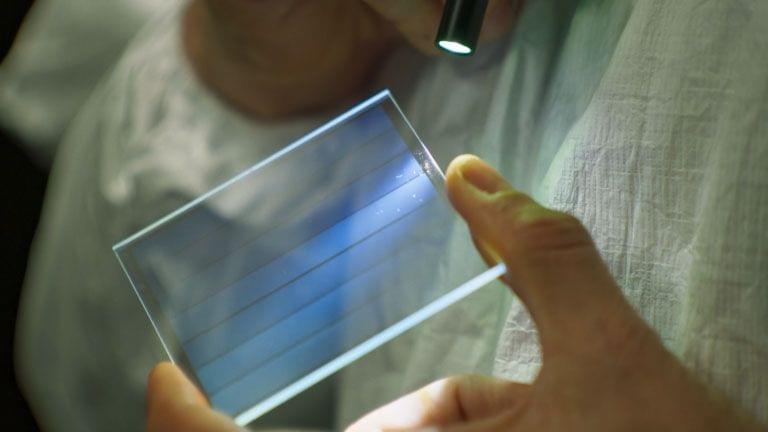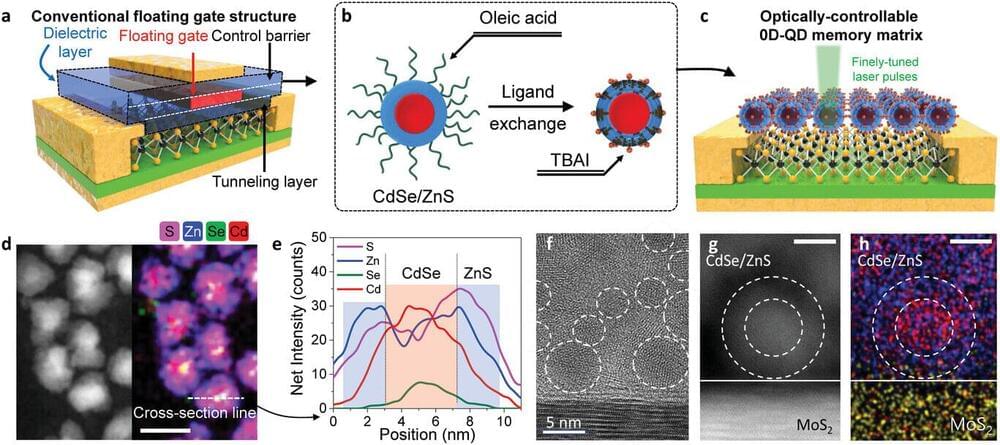A technique based on modulating quantum processes inside human cells could improve treatment for glioblastoma.



Published 8 seconds ago.
Physicists at the Kyoto Institute of Technology altered a special material called a photonic crystal to change the way light moves, creating pseudogravity, an effect similar to a tiny black hole. The experiment was inspired by Einstein’s theory of relativity and showcased light similar to how it would be if it were passing through a gravitational field. According to Science Alert, this experiment has far-reaching implications for the control and manipulation of light in optics and communications technology.

In a paper published in Nature Photonics, researchers from the University of Oxford, along with collaborators from the Universities of Muenster, Heidelberg, and Exeter, report on their development of integrated photonic-electronic hardware capable of processing three-dimensional (3D) data, substantially boosting data processing parallelism for AI tasks.
Conventional computer chip processing efficiency doubles every 18 months, but the processing power required by modern AI tasks is currently doubling around every 3.5 months. This means that new computing paradigms are urgently needed to cope with the rising demand.
One approach is to use light instead of electronics—this allows multiple calculations to be carried out in parallel using different wavelengths to represent different sets of data. Indeed, in ground breaking work published in the journal Nature in 2021, many of the same authors demonstrated a form of integrated photonic processing chip that could carry out matrix vector multiplication (a crucial task for AI and machine learning applications) at speeds far outpacing the fastest electronic approaches. This work resulted in the birth of the photonic AI company, Salience Labs, a spin-out from the University of Oxford.

Scanning tunnelling microscopy images of simple glycoconjugates and glycosaminoglycans and their corresponding structures.
Scanning tunnelling microscopy has enabled researchers to directly image important sugar molecules attached to lipids and proteins. The experiments provide a picture at the single-molecule level of the sequences and locations of glycans bound to important biomolecules, offering new insight into the role they play in biology.


Summary: A new study delves into the enigmatic realm of deep neural networks, discovering that while these models can identify objects akin to human sensory systems, their recognition strategies diverge from human perception. When prompted to generate stimuli similar to a given input, the networks often produced unrecognizable or distorted images and sounds.
This indicates that neural networks cultivate their distinct “invariances”, differing starkly from human perceptual patterns. The research offers insights into evaluating models that mimic human sensory perceptions.


We construct a metrology experiment in which the metrologist can sometimes amend the input state by simulating a closed timelike curve, a worldline that travels backward in time. The existence of closed timelike curves is hypothetical. Nevertheless, they can be simulated probabilistically by quantum-teleportation circuits. We leverage such simulations to pinpoint a counterintuitive nonclassical advantage achievable with entanglement. Our experiment echoes a common information-processing task: A metrologist must prepare probes to input into an unknown quantum interaction. The goal is to infer as much information per probe as possible. If the input is optimal, the information gained per probe can exceed any value achievable classically. The problem is that, only after the interaction does the metrologist learn which input would have been optimal.

We live in an era of data deluge. The data centers that are operated to store and process this flood of data use a lot of electricity, which has been called a major contributor to environmental pollution. To overcome this situation, polygonal computing systems with lower power consumption and higher computation speed are being researched, but they are not able to handle the huge demand for data processing because they operate with electrical signals, just like conventional binary computing systems.
Dr. Do Kyung Hwang of the Center for Opto-Electronic Materials & Devices of the Korea Institute of Science and Technology (KIST) and Professor Jong-Soo Lee of the Department of Energy Science & Engineering at Daegu Gyeongbuk Institute of Science and Technology (DGIST) have jointly developed a new zero-dimensional and two-dimensional (2D-0D) semiconductor artificial junction material and observed the effect of a next-generation memory powered by light.
Transmitting data between the computing and storage parts of a multi-level computer using light rather than electrical signals can dramatically increase processing speed.

One of the biggest challenges for earthquake early warning systems (EEW) is the lack of seismic stations located offshore of heavily populated coastlines, where some of the world’s most seismically active regions are located.
In a new study published in The Seismic Record, researchers show how unused telecommunications fiber optic cable can be transformed for offshore EEW.
Jiuxun Yin, a Caltech researcher now at SLB, and colleagues used 50 kilometers of a submarine telecom cable running between the United States and Chile, sampling seismic data at 8,960 channels along the cable for four days. The technique, called Distributed Acoustic Sensing or DAS, uses the tiny internal flaws in a long optical fiber as thousands of seismic sensors.